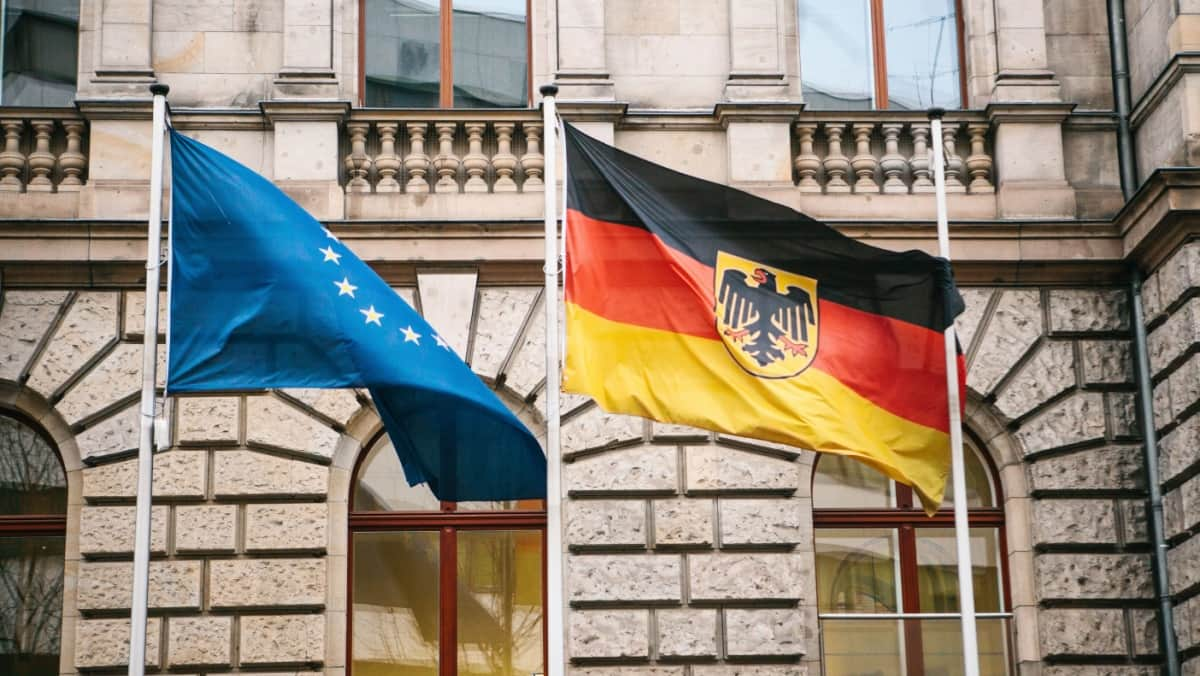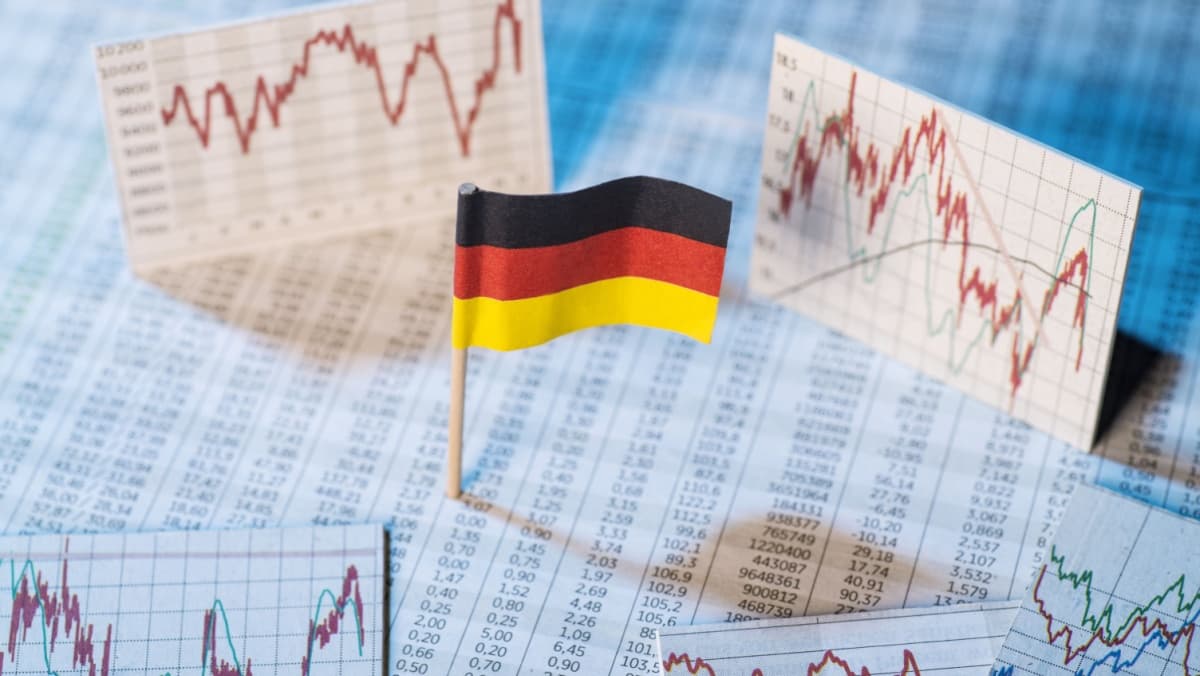Thursday May 23 2024 11:29

6 min

Germany spearheaded the ongoing recovery in eurozone economic activity in May, according to the flash eurozone PMIs, indicating that global growth is becoming less dependent on the U.S.
The eurozone economy had contracted in the latter half of 2023 due to a surge in energy and food prices following Russia’s invasion of Ukraine and the subsequent rise in interest rates aimed at controlling inflation.
In contrast, the U.S. economy saw robust expansion during the same period, resulting in an unusually wide growth gap between the U.S. and the eurozone. This gap has narrowed as the eurozone returned to growth in the first quarter of this year, and the surveys suggest this trend will persist.
Eurozone business activity increased for the third consecutive month in May, reaching the fastest pace in a year. The Eurozone PMI (Purchasing Managers Index) Composite, which measures activity in both the services and manufacturing sectors, rose to 52.3 from 51.7 (a reading above 50.0 indicates growth).
Сalculate your hypothetical P/L (aggregated cost and charges) if you had opened a trade today.
Market

Instrument


Account Type
Direction
Quantity
Amount must be equal or higher than
Amount should be less than
Amount should be a multiple of the minimum lots increment
USD
EUR
GBP
CAD
AUD
CHF
ZAR
MXN
JPY
Value
Commission
Spread
Leverage
Conversion Fee
Required Margin
Overnight Swaps
Past performance is not a reliable indicator of future results.
All positions on instruments denominated in a currency that is different from your account currency, will be subject to a conversion fee at the position exit as well.
This uptick was driven by Germany, where robust services and industrial improvement pushed activity to its highest level in a year. This helped the bloc’s manufacturing sector move closer to recovery, hitting a 15-month peak.
Also released, France's Manufacturing PMI rose from 45.3 to 46.7 in May, while Services PMI declined from 51.3 to 49.4. The Composite PMI fell from 50.5 to 49.1, returning to contraction.
In Germany, Manufacturing PMI increased from 42.5 to 45.4 in May, reaching a 4-month high. Services PMI climbed from 53.2 to 53.9, marking an 11-month high, while the Composite PMI rose from 50.6 to 52.2, achieving a 12-month high.
Hamburg Commercial Bank chief economist Dr. Cyrus de la Rubia commented on the data:
“The German economy is outshining the French one, driven by a robustly growing services sector which is shrinking in France. The manufacturing sector’s development is less severe in France, but as in Germany the sector has not yet escaped recession. While people love to compare the performance of economies, finger pointing to the possible weaknesses and strengths, the good news here is that overall, both economies move in tandem. This means that there are good chances for France to catch up eventually in the services sector which would put eurozone growth on a sounder footing.”
A similar survey due later on Thursday is expected to show steady growth in U.S. activity in May. The narrowing growth gap between the U.S. and the eurozone suggests that any divergence in their central banks' policies may be short-lived.
The European Central Bank (ECB) has signaled plans to lower its key interest rate in early June, while the Federal Reserve is waiting for evidence that a slowdown in inflation will resume before making similar moves.

Dr. Cyrus de la Rubia offered his thoughts on the flash Eurozone PMI reading:
“This looks as good as it could be. The PMI composite for May indicates growth for three months straight and that the eurozone’s economy is gathering further strength. [...] Manufacturing acts less and less as a stumbling block for the economy and optimism about future output has increased further.”
The eurozone continued to add jobs this month in response to stronger demand, the surveys showed. And an easing of price pressures will alleviate inflation concerns at the European Central Bank, De La Rubia said.
“This will be supportive for the apparent stance of the ECB to cut rates at the meeting on June 6,” he said.
Despite the recovery, the eurozone shouldn’t bank on successive cuts to borrowing costs, ECB Vice President Luis de Guindos said in an interview published Thursday:
“There is a huge degree of uncertainty. We have made no decisions on the number of interest rate cuts or on their size. We will see how economic data evolve[s]”.
Continued resilience in the eurozone economy would likely stay the ECB’s hand, according to a note from economist Franziska Palmas at Capital Economics cited by The Wall Street Journal.
“If the economy continues to hold up well, cuts further ahead may be slower than we had anticipated,” she said.
The euro gained against multiple currencies following the data release on Thursday. EUR rose 0.14% against sterling, with EURGBP trading at 0.8523 as of 10:00 GMT on May 23.
The European common currency saw stronger gains against the U.S. dollar, with EURUSD up by 0.2%, trading at $1.0846. The U.S. dollar index (DXY), a measure of the greenback’s strength against multiple major peers, was down 0.18% at 104.74. DXY previously saw gains after various Federal Reserve officials said they were willing to hike interest rates if needed, as per recently released FOMC minutes.
EUR to JPY was also up 0.13% at 169.94 yen.
When considering shares, indices, forex (foreign exchange) and commodities for trading and price predictions, remember that trading CFDs involves a significant degree of risk and could result in capital loss.
Past performance is not indicative of any future results. This information is provided for informative purposes only and should not be construed to be investment advice.
Asset List
View Full ListLatest
View all
Tuesday, 15 April 2025

6 min

Tuesday, 15 April 2025

6 min

Monday, 14 April 2025

5 min


